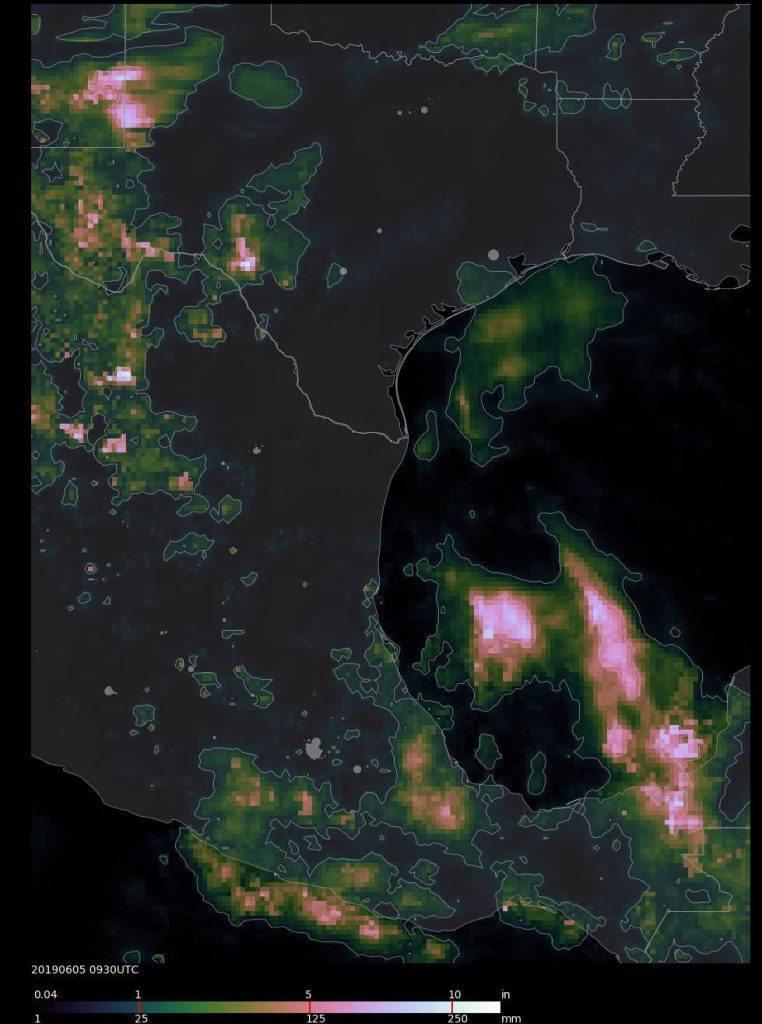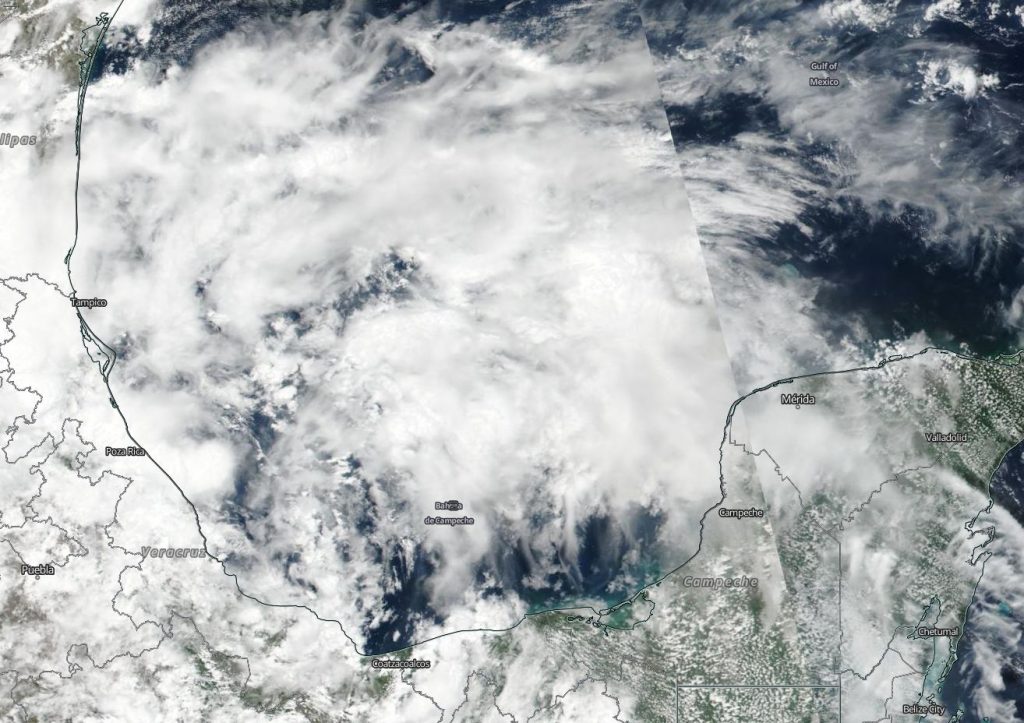June 05, 2019 – NASA Estimates Heavy Texas and Louisiana Rainfall from Gulf Weather System
Earlier in the week, NOAA’s National Hurricane Center was monitoring a low-pressure system in the Gulf of Campeche that has now moved along the Texas and Louisiana coastlines, bringing heavy rainfall. On June 5, NASA used a constellation of satellites to estimate that rainfall.

On June 5, the National Weather Service National Prediction Center in College Park, Maryland noted that there is a “High risk for flash flooding across parts of southeast Texas and southern Louisiana Today into Tonight.”
Estimating Heavy Rainfall
Forming in the Bay of Campeche on June 3, tropical disturbance 91L looked ripe to develop into a minor tropical cyclone before making landfall along the Gulf Coast of Texas, but high wind shear inhibited its development. On June 4, the National Hurricane Center dropped the chances that it would consolidate into a depression to 20 percent. On June 5, although the low-pressure area is expected to remain disorganized, it is expected to generate a lot of rainfall for the Gulf coast states.
“NASA’s IMERG data showed the tropical rainfall it brought has led to flash flooding throughout the Houston area on the morning of June 5, dumping more than 10 inches on a large region southwest of the city,” said Matt Lammers of NASA’s Goddard Space Flight Center in Greenbelt, Maryland.
The Integrated Multi-satellitE Retrievals for GPM (IMERG) creates a merged precipitation product from the Global Precipitation Measurement mission or GPM constellation of satellites. At NASA Goddard an IMERG rainfall accumulation image was created from June 3 at 0000 UTC (June 2 at 8 p.m. EDT) to June 5 at 5:30 a.m. EDT (0930 UTC). Most of the precipitation in the Houston area has fallen since the latest IMERG Early processing, so rainfall totals will be higher.
The National Weather Service noted that the moisture interacting with an upper level low moving into the Southern Plains. Heavy to excessive rainfall is likely across southeast Texas and into the Lower Mississippi Valley today, with a high risk for flash flooding where as much as 4 to 7 plus inches more of rain is in the forecast from extreme southeast Texas into southwest Louisiana.
What Is NASA’s IMERG?
NASA’s GPM or Global Precipitation Measurement mission satellite provides information on precipitation from its orbit in space. GPM is a joint mission between NASA and the Japan Aerospace Exploration Agency or JAXA. GPM also utilizes a constellation of other satellites to provide a global analysis of precipitation that are used in the IMERG calculation.
At NASA’s Goddard Space Flight Center in Greenbelt, Maryland, those data are incorporated into NASA’s IMERG or Integrated Multi-satellitE Retrievals for GPM. IMERG is used to estimate precipitation from a combination of passive microwave sensors, including the Global Precipitation Measurement (GPM) mission’s core satellite’s GMI microwave sensor and geostationary IR (infrared) data. IMERG real-time data are generated by NASA’s Precipitation Processing System every half hour and are normally available within six hours.
IMERG creates a merged precipitation product from the GPM constellation of satellites. These satellites include DMSPs from the U.S. Department of Defense, GCOM-W from the Japan Aerospace Exploration Agency (JAXA), Megha-Tropiques from the Centre National D’etudies Spatiales (CNES) and Indian Space Research Organization (ISRO), NOAA series from the National Oceanic and Atmospheric Administration (NOAA), Suomi-NPP from NOAA-NASA, and MetOps from the European Organisation for the Exploitation of Meteorological Satellites (EUMETSAT). All of the instruments (radiometers) onboard the constellation partners are inter-calibrated with information from the GPM Core Observatory’s GPM Microwave Imager (GMI) and Dual-frequency Precipitation Radar (DPR).
Flood Watches
There is a moderate to high risk for flash flooding across parts of southeast Texas and southern Louisiana on Wednesday, June 5.
The National Weather Service in Houston/Galveston, Texas noted, “Numerous showers and thunderstorms are expected today. Rainfall will be locally heavy at times. A Flash Flood Watch is in effect through this evening. Rainfall totals will average 3 to 5 inches with isolated totals approaching 8 inches. Strong onshore winds will will produce elevated tides today and water levels at high tide could exceed 3.5 feet. Minor coastal flooding will be possible and a Coastal Flood Advisory is in effect.
Movement of the Weather System
The National Weather Service noted that “heavy to excessive rainfall threat shifts from the lower Mississippi Valley on Wednesday into the Central Gulf Coast states and eventually the U.S. Southeast by the end of the week.” For updated forecasts, visit: www.weather.gov
By Rob Gutro/with forecast information from weather.gov
NASA’s Goddard Space Flight Center


